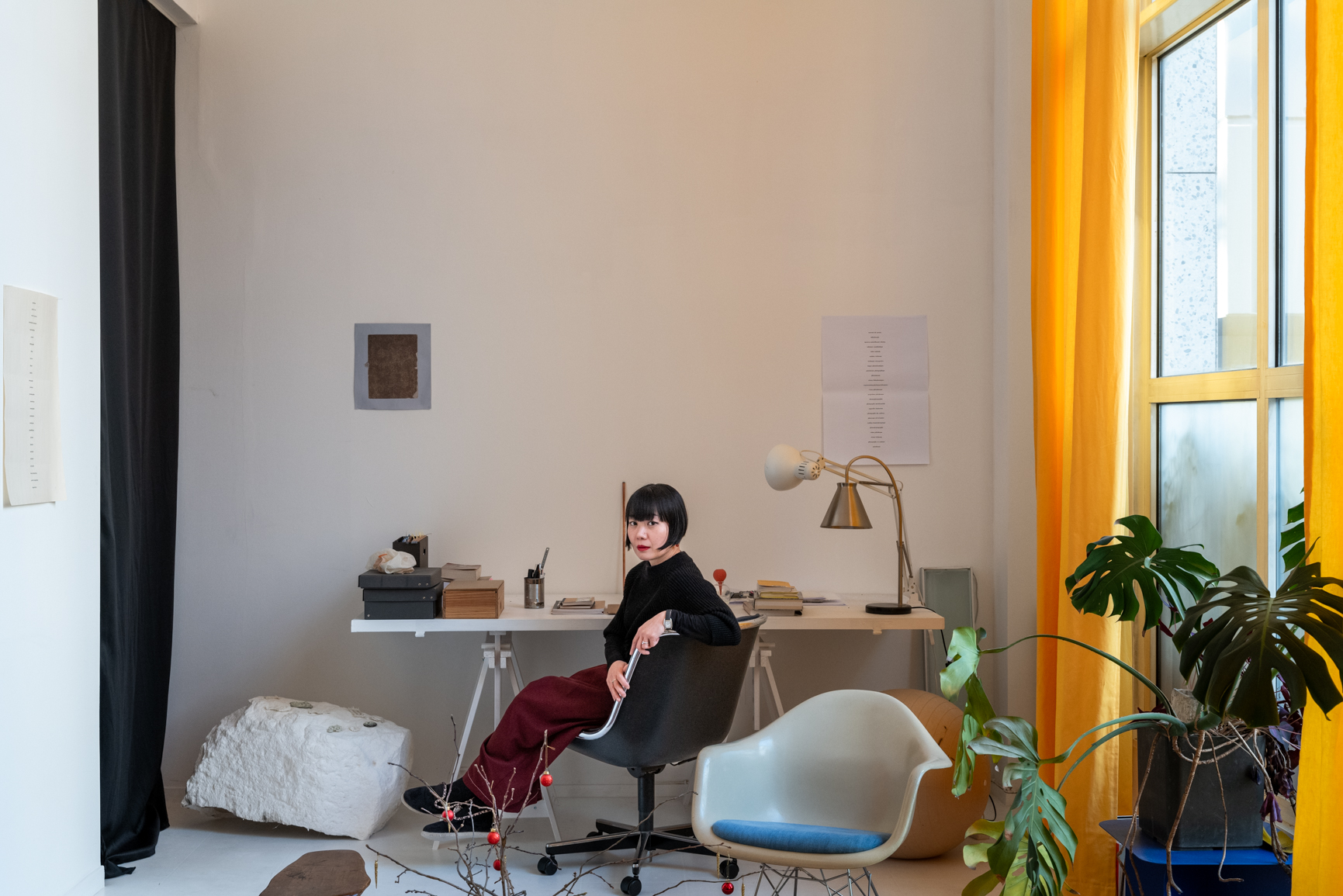All images © Taisuke Yoshida for BJP
We visit a bright apartment in the 17th arrondissement of Paris administered by DRAC, an organisation which supports artists
Hanako Murakami lives in an unassuming white 1970s building in the 17th arrondissement of Paris, near the bustling Marché des Batignolles. It conceals a calm and beautiful space inside. The two-storey apartment, which she shares with her husband and daughter, is an ‘atelier-logement’ fortuitously acquired through DRAC (Direction Régionale des Affaires Culturelles), a French organisation that encourages artistic creation. DRAC has an art collection and various art centres throughout France, but it also runs an extremely competitive programme allocating social housing to artists.
Murakami’s front door leads into a bright, open living/dining room with ultra-high ceilings; the six metres of uninterrupted windows are flanked by long yellow curtains, while books line the floor beneath (including copies of Donald Judd Writings and Shape of Light: 100 Years of Photography and Abstract Art). She offers slippers as we take off our shoes, and buckwheat tea from her native Japan, served in pretty ceramic bowls.
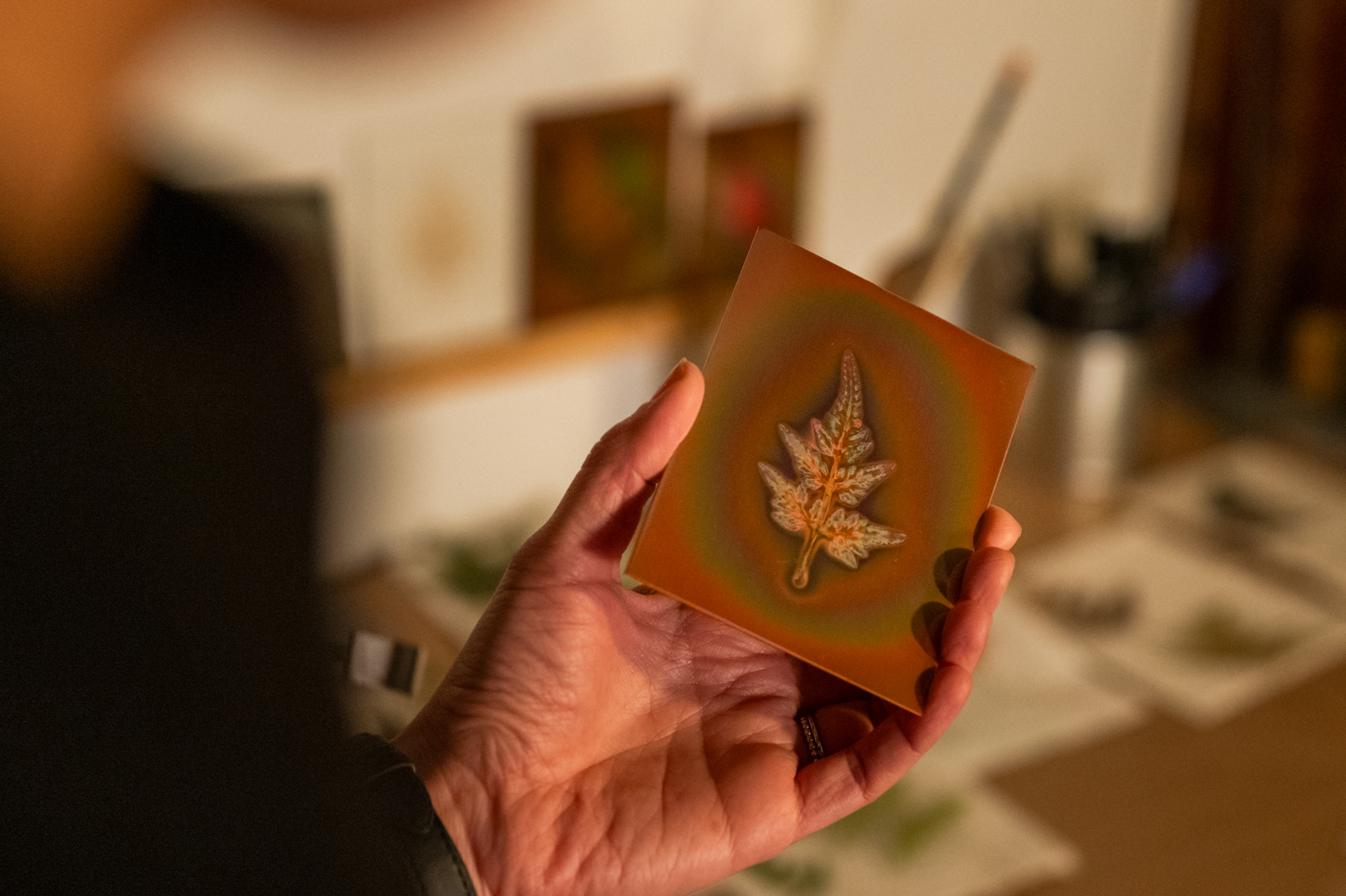
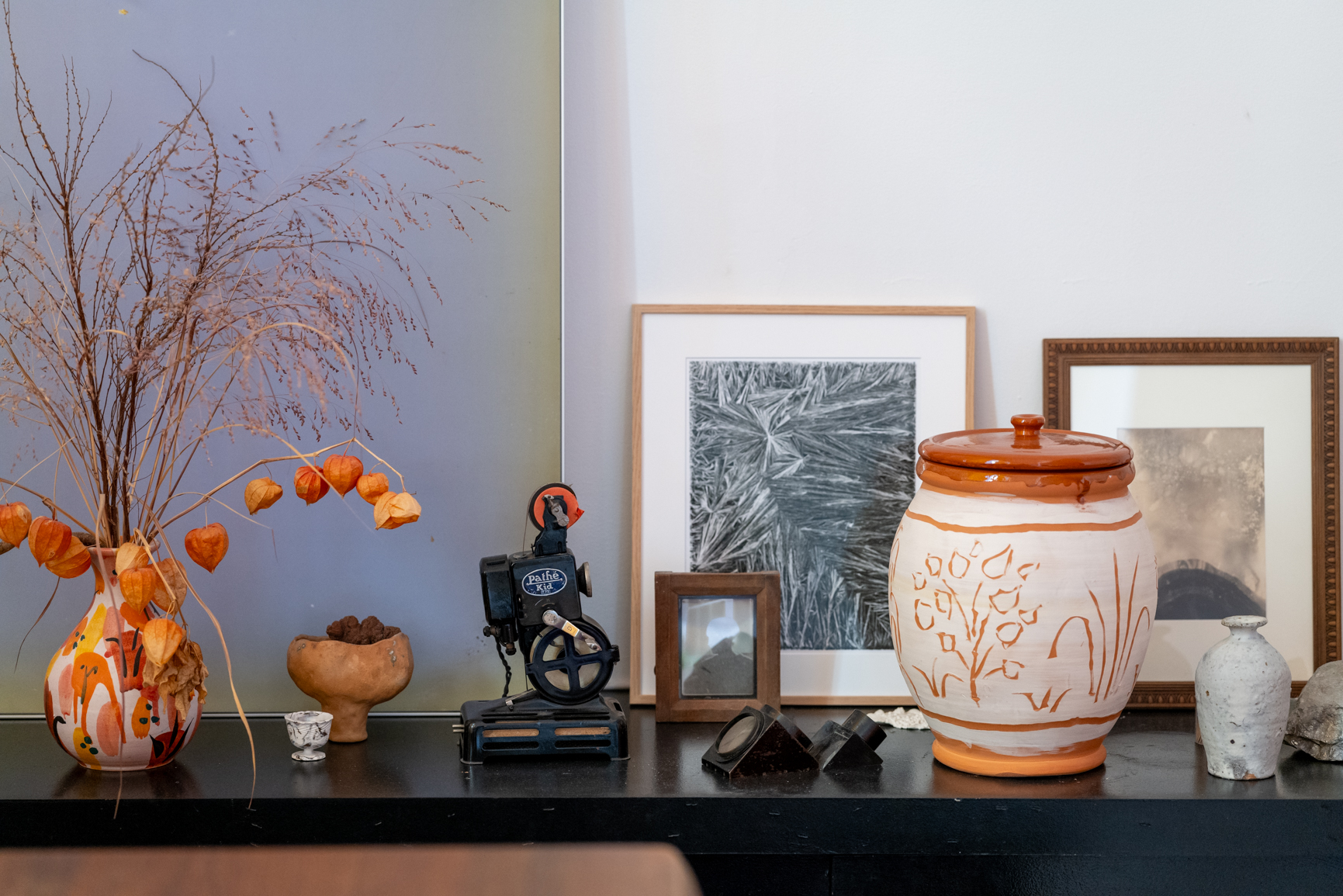
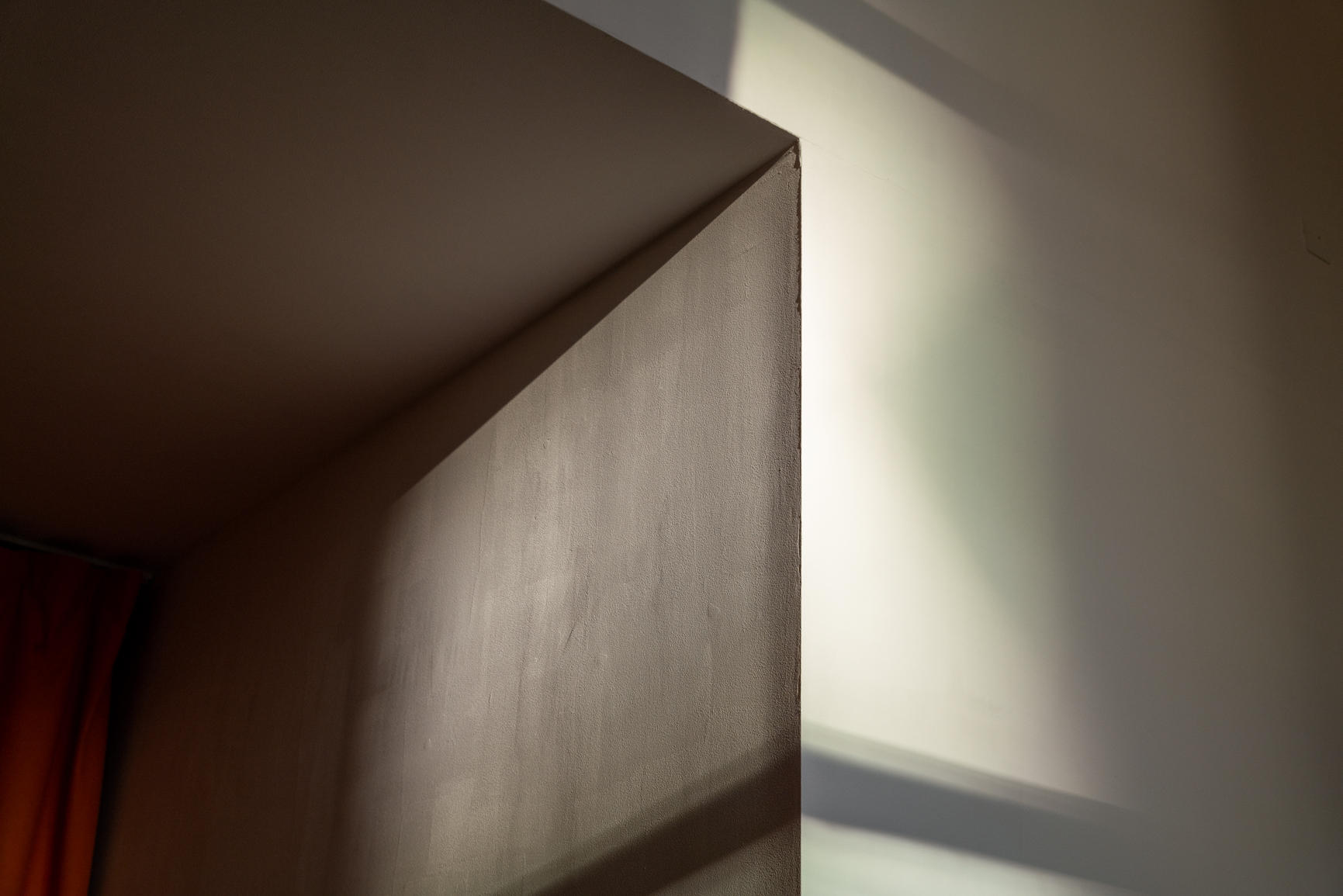
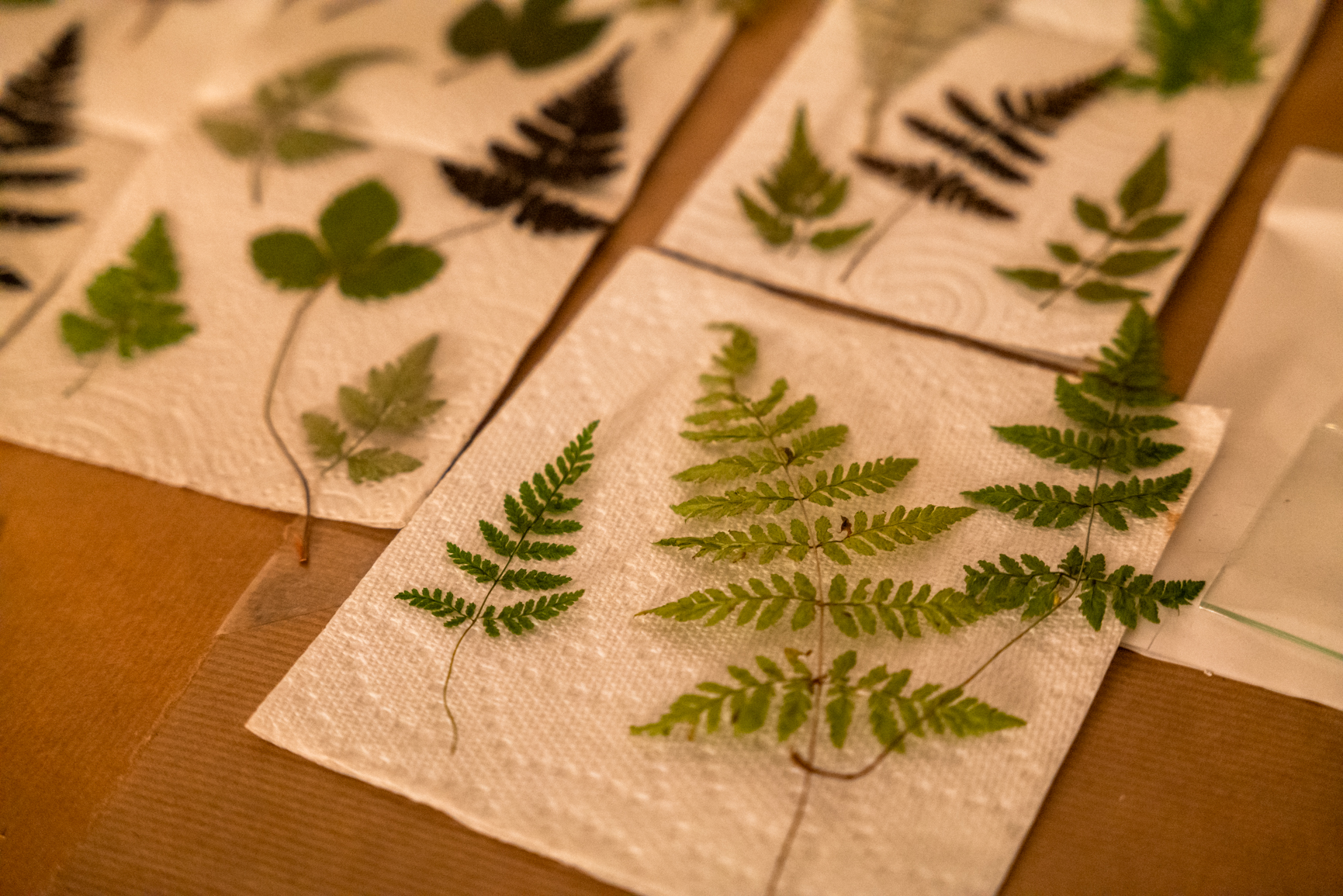
Murakami was born in Tokyo but, from ages five to 10, lived with her family in Belgium. From ages 10 until 26 she was back in her native country, and felt settled there – until she didn’t. “Intellectually, I’m very anchored to the Japanese language,” she says. “But eventually I realised I could go abroad. It was in 2011, two years after I had finished my MA, and I was just struggling, like other young artists. I spoke French but maybe hadn’t been conscious enough of the power of it.” Receiving a one-year scholarship, she returned to Belgium on an exchange programme at L’Ecole nationale supérieure des arts visuels de La Cambre.
In contrast with Tokyo, Brussels felt small, and Murakami found herself heading to Paris every weekend. “Since I was interested in the oldest photography practices, I was like, ‘Maybe I should go to the place where it was invented’.” She moved to Paris in 2012, taking further studies at Le Fresnoy – Studio National des Arts Contemporains. After several years in France, she pursued archival research in the United States and in 2018, became an artist-in-residence, doing six months at the Getty Research Institute and six months in Rochester, New York, at the George Eastman Museum, before returning to the French capital.
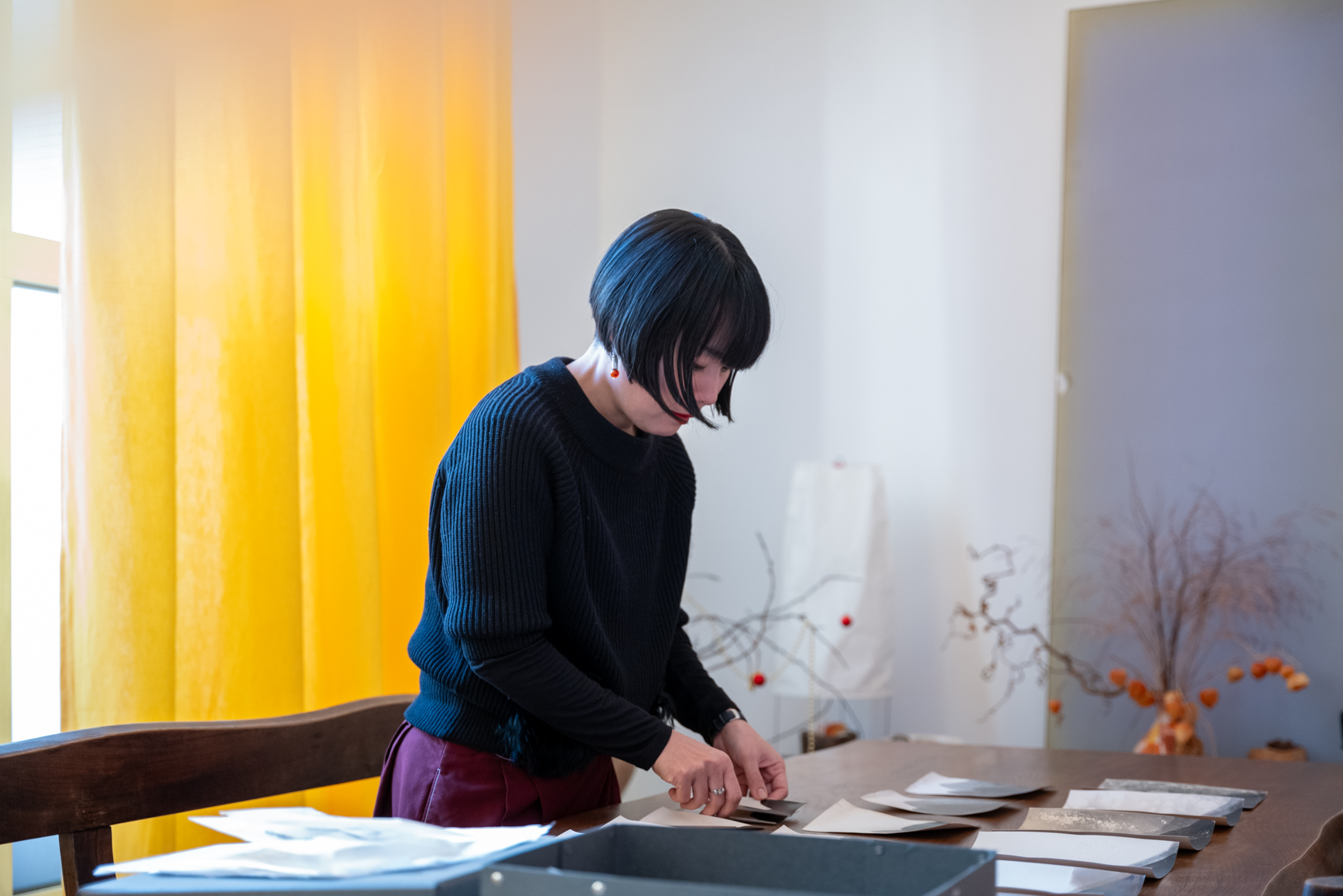
Murakami is fascinated by alternative photography, all the arcane processes before the industrialisation of the medium. Her studio space and darkroom are tucked behind a curtain, their shelves stacked with labelled boxes, stocks of glass plates, Instamatic cameras, and heavy-duty masks for when she is using toxic chemicals (such as mercury). She moved into the ‘atelier-logement’ two years ago, and having her studio in her home has given her a feeling of great liberty. Previously she commuted to work in the basement of an architecture firm, and had to occupy the bathroom to play with chemicals, which sometimes felt awkward. Now she comfortably accommodates studio visits with her gallerist and interested collectors.
Currently her studio is dotted with an array of green leaves and plant cuttings, which she has been searing against copper plates using an IBX Instruments heating plate. The process, which results in lush colours, is a rarely used approach found in a 1850s-era photographic manual – thermography. Murakami will show this work in an exhibition on colour photography in Cherbourg until September, part of the festival Normandie Impressionniste. She will also present another work, Nomenclature of Colour Photography, “about how the notion of colour photography was born… the inventors, while they were inventing, they were also trying to coin the terms. I collected all the different words that meant colour photography before it became industrialised”.
She gathered this list from a deep dive into the correspondence and notebooks of Louis Ducos du Hauron, the French inventor of colour photography, and the phrases are positively poetic – souvenir du spectre, rétine minérale, vision photochromées, aquarelles lumineuses. Murakami showed a previous piece, Nomenclature, in a group exhibition at the Getty Center, which gathered all the phrases before the term ‘photography’ officially designated black-and-white practices. Nineteenth-Century Photography Now was on view from April to July.
“When you’re alone, it’s very difficult to protest. But when you have a union, you have a certain structure [supporting you] while facing a bigger organisation, and they are obliged to respond”
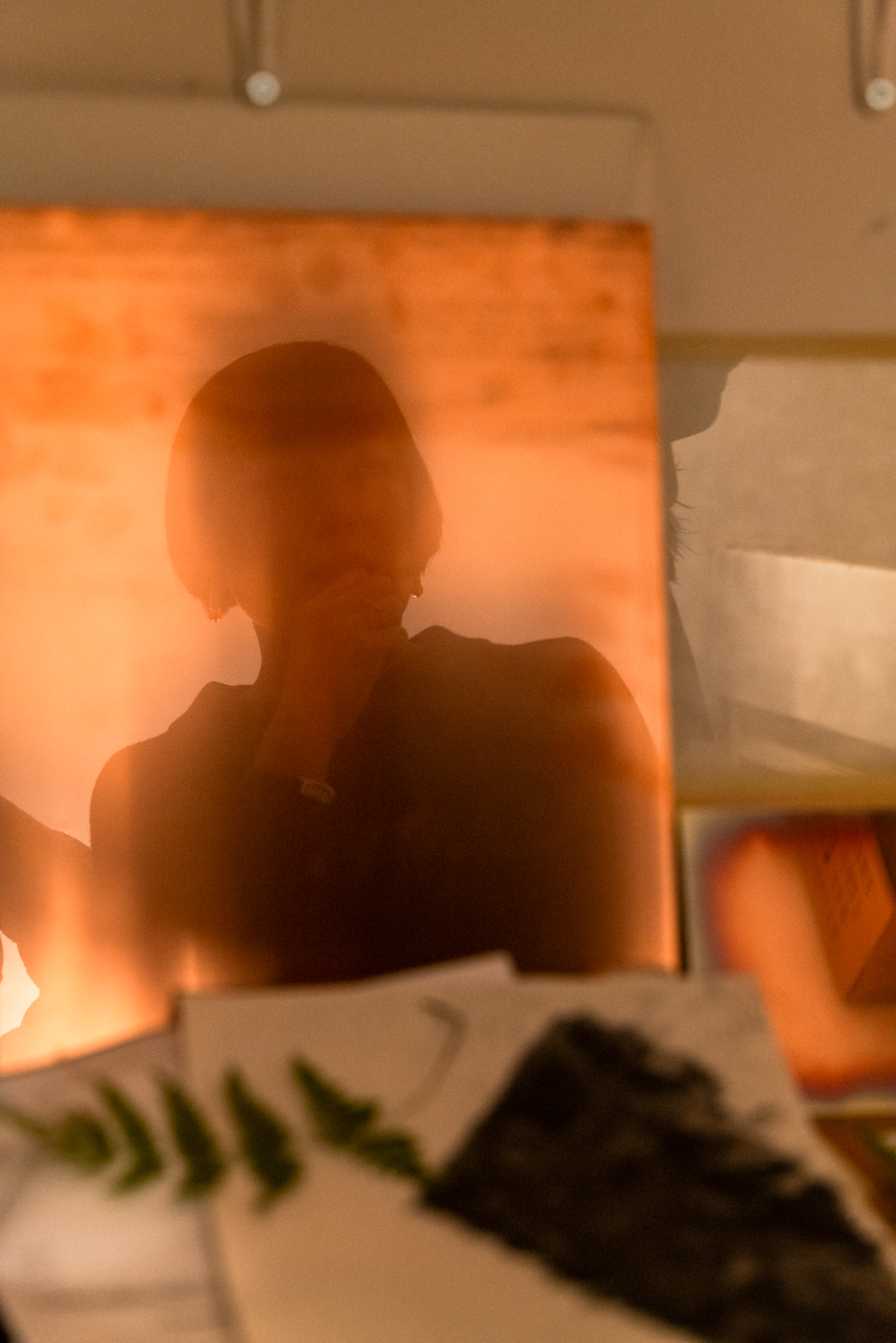
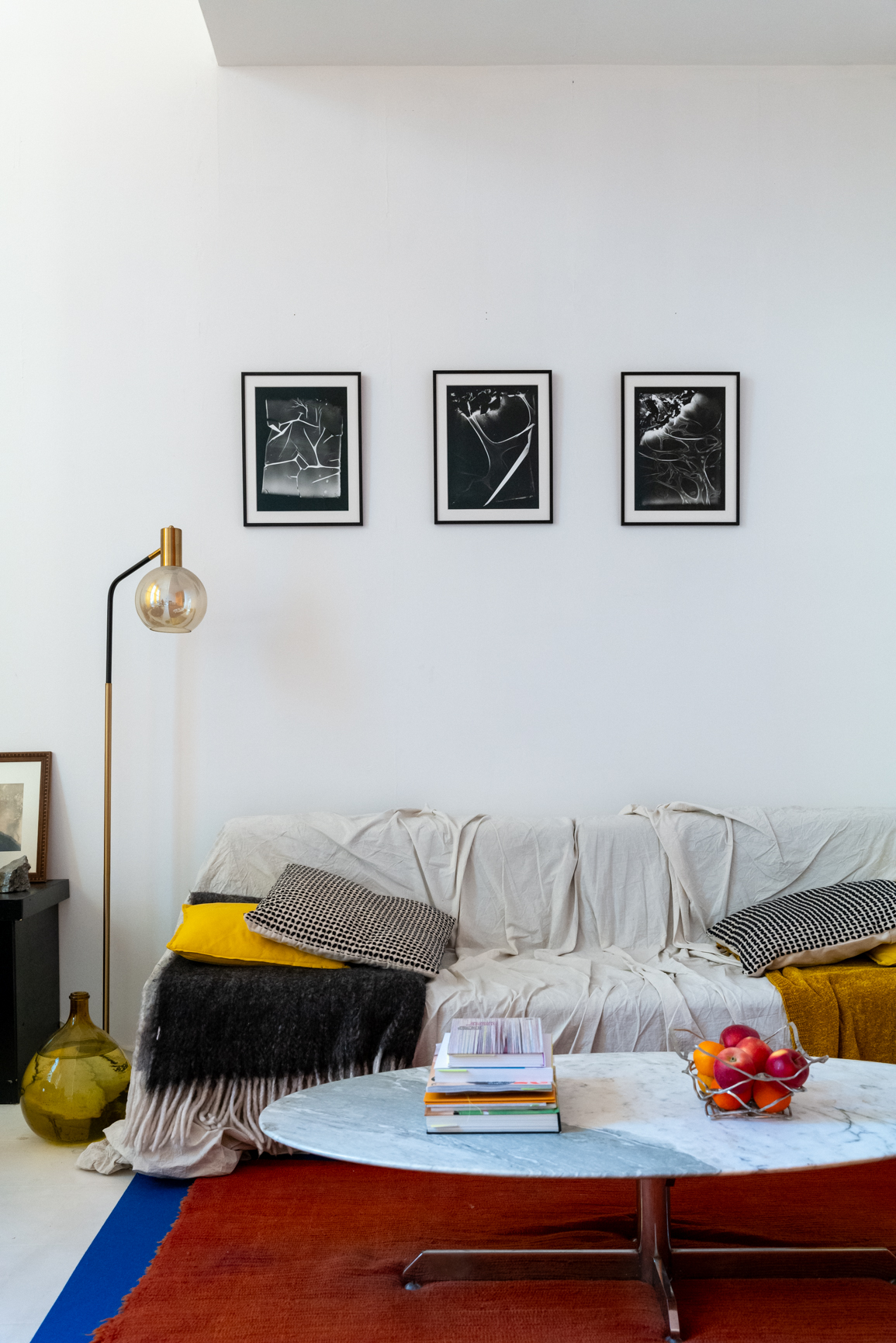
Murakami relishes the beauty of bygone processes that have often been dismissed as laborious or time-consuming, and thus fallen off the radar. She has previously recreated a format favoured by Nicéphore Niépce, namely a long process of polishing limestone to a mirror state to make it photosensitive. “Everything has to be faster, cheaper and easier to manipulate, but behind that are all those different technical possibilities that were abandoned just because they were not efficient enough,” she says. “From an artistic point of view, there’s lots of potential.”
When Murakami was working on her MA in the Department of New Media at Tokyo University of the Arts, she wondered about the sustainability of updating her computer and camera every two years to keep pace with whip-fast digital updates. She felt the pressure to do so was transforming her from an artist into a consumer, and decisively resisted. “The newest thing is renewed every year, but the oldest thing always stays the oldest,” she reasons. “When you stick with the oldest, you can go further to find something new that nobody saw before.”
In tandem with her work on thermography she is currently preparing a new perfume for an exhibition with her Parisian gallerist Jean-Kenta Gauthier. Last year she made a perfume called L’Air de l’Image based on Nicéphore Niépce’s laboratory in Chalon-sur-Saône, in which he invented photography. “When he developed his images, he was using turpentine oil and the essence of lavender,” she explains. “This mixture is very strong. The lavender is reduced over several hours, it smokes your whole house! Photography was born in this olfactory environment.”
That scent was diffused at her gallerist’s booth at Paris Photo in 2023; now she is working on a scent linked to a pre-industrialised camera flash, which once triggered smoke and an acutely metallic smell. She invited a “nose” – a perfume specialist – to her studio to help imagine a fragrance to tell this story.
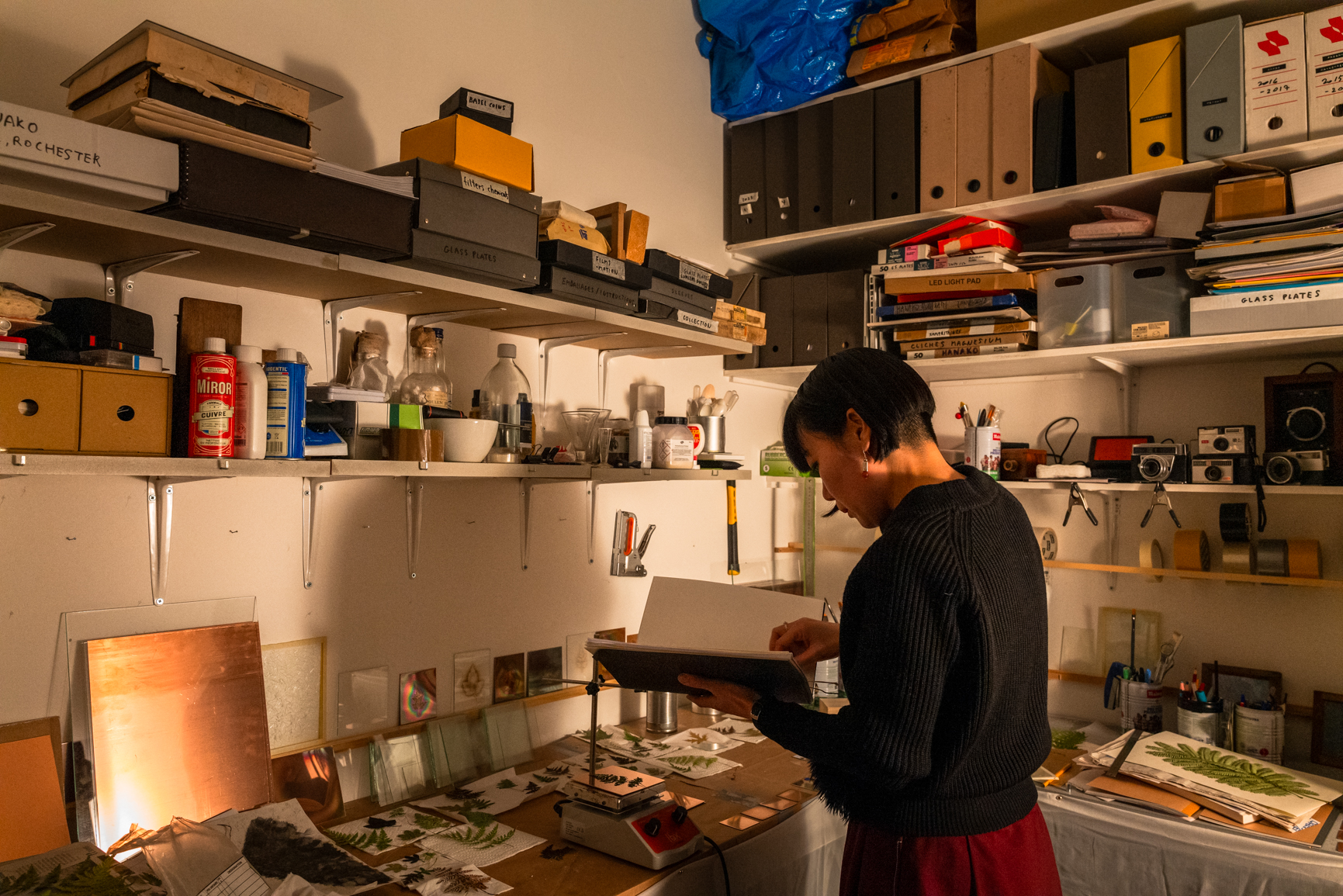
Contemporary resolve
Beyond her individual practice, Murakami is concerned about the artistic milieu at large. In France there is support for artists but in Japan it is conspicuously lacking, so last year she and three friends set up an artists’ union aimed at Japanese art workers all over the world. The initiative began with online meetings during Covid-19, because Japanese artists were not receiving support from the government; they spearheaded a petition, which successfully resulted in some subsidies.
During this process Murakami and her friends realised that many in the art world did not know their rights, and were underestimating the standards they deserved. Murakami organised webinars to address artist fees, insurance and workplace harassment in Japan. “You never learn that in art school, they just tell you how to make work, and after it’s ‘Ciao, goodbye’,” she says. “When you’re alone, it’s very difficult to protest. But when you have a union, you have a certain structure [supporting you] while facing a bigger organisation, and they are obliged to respond.”
Ultimately, Murakami’s world view fuses old school practices with contemporary advocacy; it makes for a powerful pairing.

